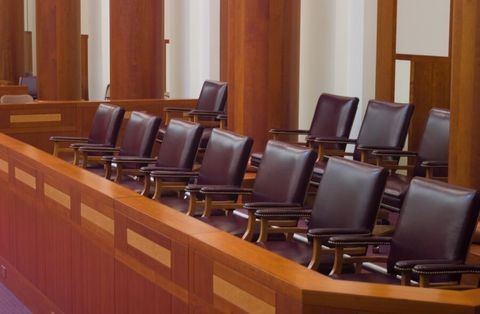Scrutiny of Foreign Ownership in the Telecommunications Sector Gains Momentum with the FCC’s Issuance of Show Cause Orders and a Recent Public Notice Refreshing the Team Telecom Record and Requesting Comments
Client Alert | 6 min read | 05.07.20
The Federal Communications Commission (FCC) continues to set pace regarding its review and authorization of licenses under which foreign-owned companies operate, especially those that are Chinese state-owned. In response to the April 4th Executive Order formalizing Team Telecom (EO), the FCC issued a Public Notice on April 27th refreshing the record of the FCC’s 2016 Notice of Proposed Rulemaking (NPRM) that addresses the Executive Branch’s review of license applications involving foreign ownership. Through the Public Notice, the FCC enters the EO into the record and requests comments on how the EO affects proposed rules and procedures outlined in the NPRM. Comments are due 30 days after publication of the Public Notice in the Federal Register, which is expected in the upcoming weeks.
Separately, following a recommendation by Executive Branch agencies to revoke China Telecom (Americas) Corp.’s (“China Telecom”) authorizations, the FCC issued orders to show cause on April 24, 2020, to China Telecom and three other companies as to why it should not initiate a proceeding to revoke their authorizations due to national security concerns. Responses are due 30 days from the date of the orders.
Background
The FCC issued an NPRM in 2016 to formalize the process through which Executive Branch agencies – more specifically, Team Telecom – make recommendations to the FCC regarding certain applications with reportable foreign ownership. The rulemaking, which stalled after the close of the comment period, sought to remedy concerns over timeliness and transparency surrounding that review process.
On April 4th, the White House issued an EO that rebranded the ad hoc working group formerly known as Team Telecom as the Committee on the Assessment of Foreign Participation in the U.S. Telecommunications Sector (the “Committee”). The EO also establishes processes and procedures for the Committee’s review of certain licensing application referred to it by the FCC, including a shot-clock timeline and allowances for the imposition of mitigation and mitigation monitoring as conditions to the licenses.
Upon its issuance, FCC Chairman Ajit Pai welcomed the EO, and said that “[n]ow that this Executive Order has been issued, the FCC will move forward to conclude our own pending rulemaking on reform of the foreign ownership review process.” The recent Public Notice is a step towards doing so.
The FCC’s April 27th Public Notice
The FCC’s call for comments from the telecommunications industry and Executive Branch agencies on how the EO affects the NPRM appears to be an attempt to harmonize the processes proposed in the 2016 NPRM with the directives in the EO, and allows room for the members of the Committee – the Departments of Justice, Homeland Security, and Defense – to publicly clarify its intentions regarding the implementation of the EO.
Specifically, the FCC asks commenters whether the EO warrants any additional or different rules to improve timeliness and transparency, and specifically requests that Executive Branch agencies respond to a number of questions that appear to be an attempt to fill in the gaps left open by the EO regarding the Committee’s timeline for review of an application. The FCC also asks for Executive Branch agencies’ comments regarding information gathering and certifications that it expects applicants to submit as part of the review process. Presumably, the members of the Committee will also address some of these gaps in the memorandum of understanding (MOU) that the EO directs them to promulgate by the beginning of July. Comments in response to the FCC’s request are due 30 days after publication of the Public Notice in the Federal Register.
Orders to Show Cause
On April 24th, the FCC issued three orders to show cause as to why it shouldn’t initiate proceedings to revoke the authorizations assigned to four Chinese telecommunication companies: China Telecom, China Unicom (Americas) Operations Limited (“China Unicom”), and Pacific Networks Corp. (“Pacific Networks”) and its wholly owned subsidiary ComNet (USA) LLC (“ComNet”). Pacific Networks and ComNet are indirectly owned by CITIC Group Corporation, a Chinese state-owned limited liability company. Notably, other than that directed to China Telecom, the orders to show cause aren’t predicated on a publicly available written recommendation by Executive Branch agencies.
With the exception of the order issued to China Telecom, the orders to show cause are based on the findings in the FCC’s unanimous May 2019 decision to deny the Section 214 application of China Mobile International (USA) Inc. (“China Mobile”). According to the FCC, those findings “raise questions regarding the vulnerability of authorization holders that are subsidiaries of a Chinese state-owned entity to the exploitation, influence, and control of the Chinese government.” All four recipients of the show cause orders are Chinese state-owned entities. The FCC continued to state that the findings also raise questions as to whether the companies’ retention of the FCC authorizations “serve[] the public interest and necessity” and whether the use “is consistent with the purpose for which they were assigned.” The FCC also underscored that “the national security and law enforcement risks linked to the Chinese government’s activities have grown significantly since the Commission granted these authorizations.”
The orders direct the companies to respond within 30 days with evidence demonstrating that they are not subject to the exploitation, influence, or control of the Chinese government. The companies must include certain information in their responses, including information regarding their ownership structure, the scope of their services, the identification of equipment used to provide their telecommunication services, and network diagrams. The FCC has requested that China Telecom also respond to the Executive Branch’s recommendation, which includes assertions that China Telecom breached several provisions in its mitigation agreement with the Department of Justice, the Federal Bureau of Investigation, and the Department of Homeland Security.
Takeaways for Industry
The Public Notice and the orders to show cause, coupled with the EO formalizing Team Telecom, demonstrate the acceleration of efforts to protect the telecommunications sector from national security threats, in step with recent action in other areas such as the procurement of bulk-power system electric equipment, bans that apply to Huawei in the telecommunications sector, and reforms to the Committee on Foreign Investment in the United States (CFIUS). The expanded scope of review of existing licenses established in the EO charts a path for the FCC and the Committee to take action regarding authorizations that have been in use for years. The orders to show cause could signal the start of a top to bottom review of whether it continues to be in the “public interest and necessity” to allow certain companies to operate under FCC licenses, particularly those where a company’s foreign ownership poses a potential threat to national security. Companies operating under licenses conditioned upon mitigation agreements and those with foreign ownership might prepare for increased scrutiny of their operations accordingly.
The pace with which the FCC has responded to Executive Branch action sets a precedent for swift and decisive action moving forward. Last year’s decision to deny China Mobile’s application came almost a year following the Executive Branch’s recommendation to do so. In contrast, the Executive Branch’s recommendation to revoke China Telecom’s authorizations was followed by the FCC’s issuance of a show cause order approximately two weeks later. Similarly, the FCC issued the Public Notice requesting comments on the EO’s effects on its NPRM only approximately three weeks after the publication of the EO. Accordingly, industry might anticipate quick determinations on the authorizations assigned to the four companies following the receipt of responses to the orders to show cause.
Similarly, industry might also anticipate that the FCC will move quickly to conclude its rulemaking following the close of the comment period. If finalized, that rulemaking could result in the codification of processes and procedures set forth in the EO, and could standardize the “triage questions,” information gathering, and standard mitigation. If so, it looks like the FCC’s possible codification of the Committee and its processes and procedures is heading down a path that looks a lot like the Foreign Investment Risk Review Modernization Act (FIRRMA) and its implementing regulations.
Contacts
Insights
Client Alert | 3 min read | 04.23.24
DOJ Promises NPAs to Certain Individuals Through New Voluntary Self-Disclosure Pilot Program
On April 15, 2024, the Acting Assistant Attorney General for the Criminal Division of the Department of Justice (“DOJ”) Nicole Argentieri announced a new Pilot Program on Voluntary Self-Disclosure for Individuals (“Pilot Program” or “Program”). The Pilot Program offers a clear path for voluntary self-disclosure by certain corporate executives and other individuals who are themselves involved in misconduct by corporations, in exchange for a Non-Prosecution Agreement (“NPA”). The Pilot Program specifically targets individuals who disclose to the Criminal Division at DOJ in Washington, D.C. information about certain corporate criminal conduct. By carving out a clear path to non-prosecution for those who qualify, DOJ has created another tool to uncover complex crimes that might not otherwise be reported to the Department.
Client Alert | 3 min read | 04.23.24
Client Alert | 5 min read | 04.23.24
Client Alert | 6 min read | 04.23.24



